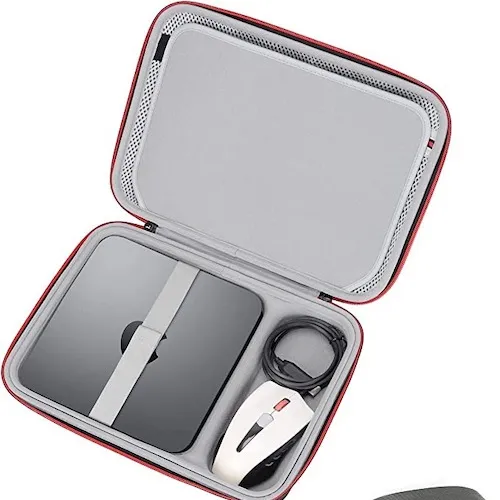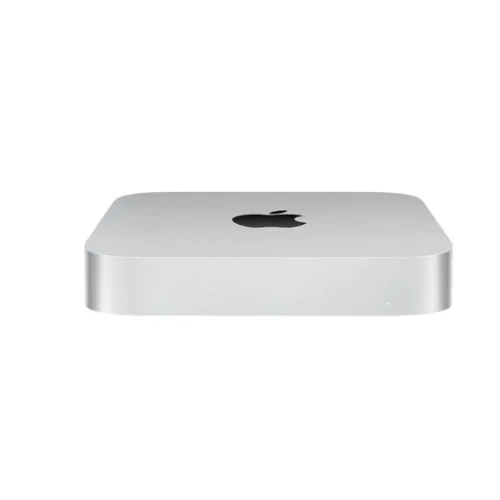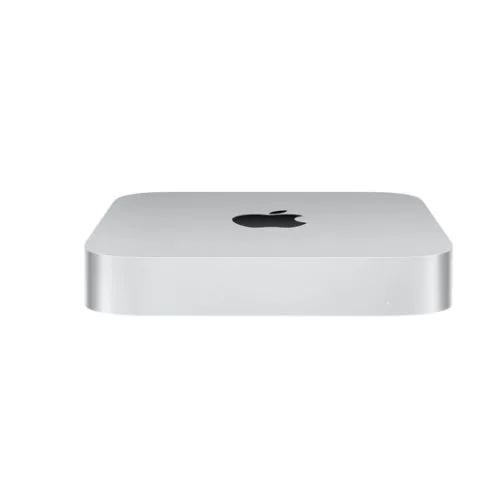Apple Mac Mini M2 Pro review: A tale of two computers
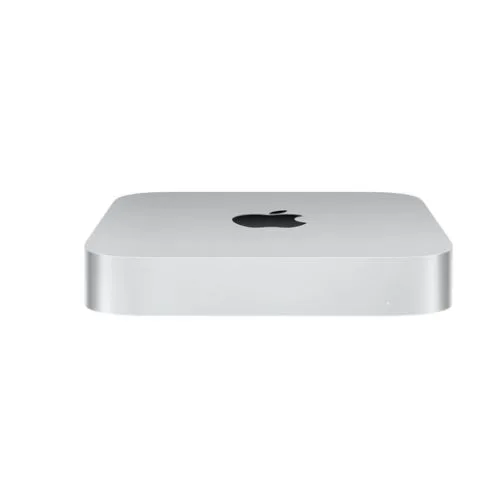
Summary
Quick verdict: Apple’s upgraded Mac Mini packs in a lot of power within its tiny frame, but you need to carefully select the right model for your needs.
- M2 Pro is a rendering beast
- Compact size
- Plenty of ports, especially on the M2 Pro version
- M2 version is much cheaper, but will come with a performance hit
- Front-mounted ports would be nice
- Absolutely no user serviceable or upgradeable parts
The Mac Mini has, for the longest time, been Apple's play towards an "entry-level" way for consumers to get on board with macOS. It's not a "cheap" computer, but by Apple standards… it sort of is or has been.
For its 2023 iteration, Apple has split that plan in half, with one lower cost model featuring the company's new M2 processor at a base-level price as well as a considerably more powerful model with an M2 Pro CPU under the hood.
The latter model does provide a serious level of desktop power, but predictably at a more pro-level price. The trick is deciding which model is going to meet your needs.
Buy Apple Mac Mini M2 Pro products
Design: Compact and cute, but I'd kill for some front-facing ports

Image: Alex Kidman/Finder
The M2 model of the Mac Mini doesn't present itself any differently from the 2022 M1 variant. It's still the same nicely proportioned silver square with a prominent Apple logo on the top. It's designed to sit on a desk out of the way, or under one of Apple's fancy Studio Displays. Apple loaned me one of those alongside the M2 Mac Mini, and it's a nice – but quite expensive – combination if you can run to it.
The square of the Mac Mini appears to float just slightly above a desk, thanks to a round plastic disc base that raises it away from surfaces where heat could be trapped.
At the front, the Mac Mini M2 feels a little barren, with only a small LED light indicating whether it's on. That's not the story at the rear, where you'll find the Mac Mini M2's bevy of ports.
Here's where you'll hit the first difference between the $999 (and up) Mac Mini M2 and the $1,999 (and up) Mac Mini M2 Pro.
The base-level model provides you with dual Thunderbolt 4/USB 2 ports, dual USB-A ports, an Ethernet port and a combo headphone/microphone jack. Jump up to the Pro model and you get 2 additional Thunderbolt 4 ports. That difference is most likely going to come into play if you're a fan of a multi-monitor approach for working.

Image: Alex Kidman/Finder
The base-level Mac Mini M2 can support dual displays over Thunderbolt at HDMI, topping out at 6K/60Hz and 5K/50Hz via Thunderbolt or 4K/60Hhz via HDMI. The Pro model ups that ante with support for 3 monitors, 2 Thunderbolt ports at 6K/60Hz and 1 HDMI at 4K/60Hz. Alternatively, if you need really sharp refresh rates and only need a single display, it can manage up to an 8K display at 240Hz over HDMI.
The ports on the Mac Mini are fine, and the size of the unit means it's not too much work to spin it around if you do need to plug in additional accessories.
Still, Apple's shown it can do front-mounted ports on these kinds of systems, as it does with the Mac Studio. It's hard not to think that it's saving that small feature for the pricier Studio, which is a little rude. Let the people have their easily accessible ports, Apple!
Performance: M2 Pro brings its performance game
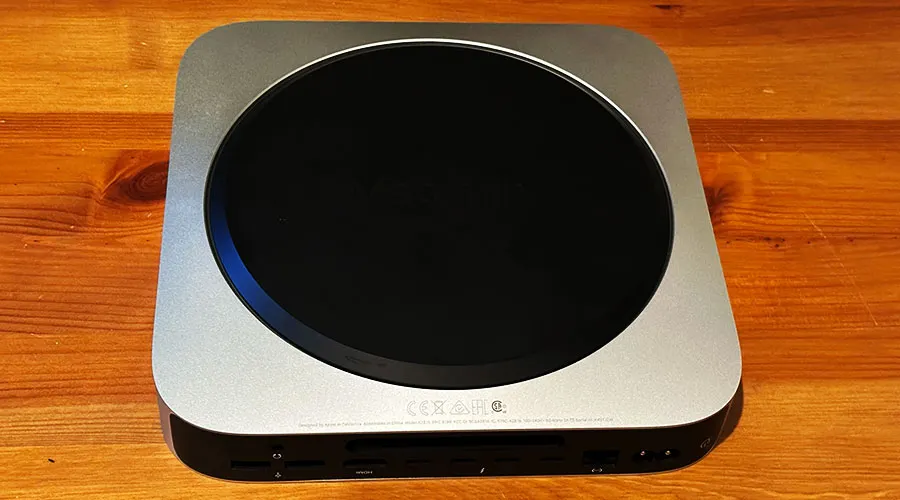
Image: Alex Kidman/Finder
Apple's second-generation silicon has generally provided iterative bumps over its M1 lines, somewhat muddied by the huge variance in existing M1 models. For a while there, you could only buy the one "M1" system as a MacBook Pro 13, Air or iMac, then expanded out into M1 Pro, M1 Max and M1 Ultra systems.
It could make for a lot of consumer confusion because while Apple will happily talk up the power benefits of M2 and M2 Pro over the first-generation silicon – which you'd expect – the lines aren't exactly clear, especially for the M1 Max and M1 Ultra systems.
Apple loaned me a Mac Mini with the full-fat M2 Pro processor with a 12-core CPU and 19-core GPU, which is the top-of-the-line model for this particular device.
To further boost its performance, it came with 32GB of unified memory, the most any Mac Mini can handle, although it did stick with the standard 512GB of storage.
That's a combination that would run you $3,049, or to put it another way, the cost of 3 entry-level Mac Mini units. If you want to go the whole hog with a fully-specced out Mac Mini M2 Pro with 8TB of storage, 10GB Ethernet and 32GB RAM, Apple will be asking for $6,799.
Configuration upfront is vital because like any other Apple Silicon Mac, everything is integrated, so you can't upgrade RAM or internal storage in any way at all after purchase.
But what does all of that mean in terms of performance?
To give this some comparative context, I ran the Mac Mini M2 Pro through Geekbench 5's standard CPU test to give it a point of comparison. The practical reality here is that not too many folks are likely to be upgrading from a Mac that's just a year old, so I've also included figures for one of the last Intel Macs – in this case, a MacBook Pro – to show where the differences lie:
The Mac Mini M2 Pro was only bested by the similarly new MacBook Pro M2 Max in this test – and not by a huge amount. What's interesting here is how it bests the Mac Studio I've previously reviewed, which is still on sale.
You could of course configure up a Mac Studio with an M1 Ultra that would wipe the floor with everything here at a much higher price. Equally, it doesn't take too much crystal ball gazing to suggest that an M2 Mac Studio will probably break cover from Cupertino sometime this year. Still, for now, the Mac Mini M2 Pro would be the better buy in a CPU grunt sense.
How does that power apply itself in a real-world scenario? To put that to the test, I ran Cinebench R23's video rendering benchmark over the Mac Mini M2 Pro. Here's how it compared:
The Mac Mini M2 Pro and MacBook Pro M2 Max are head-to-head here, with the slightest lead for the Mac Mini, but also nicely ahead of any of the tested M1 Mac variants. If you're jumping up from a much older Mac – and especially any Intel-based Mac – the differences in rendering speed and performance would be profound.
The trap here is that these figures only apply for the more expensive model tested. While I didn't have an entry-level Mac Mini M2 to test with, it's not a huge stretch to suggest that you should see similar performance from it as I've seen with the M2 MacBook Air.
Should you buy the Apple Mac Mini M2 Pro?
- Buy it if you want a good value everyday desktop Mac.
- Don't buy it if you need absolute pro-grade rendering performance.
The Mac Mini M2 is an interesting desktop PC because that split between the Pro and regular models gives it 2 distinct markets and use cases.
If you do want an entry-level Mac and don't need the portability of a laptop, the basic model is nicely powerful and should be capable of every single everyday task you throw at it.
If you do need more rendering power, the Mac Mini M2 Pro provides an interesting contrast to the Mac Studio. It's a better rendering system than the entry-level Mac Studios at a lower price point, although of course if you do need serious 8K rendering capabilities an M1 Ultra is likely to beat it out in every meaningful way.
Pricing and availability
The Mac Mini M2 retails in Australia starting at $999, while the Mac Mini M2 Pro sells from $1,999. The model tested retails at $3,049.

Specifications
Specs
Features
How we tested
The Mac Mini M2 Pro used in this review was tested over a week's usage, including standard benchmarks and more ad-hoc usage including video rendering using Apple's Final Cut Pro. The model tested was loaned to me by Apple for the purposes of review.
As a product reviewer, I have more than 20 years of experience covering the consumer tech space, including all Apple products released in that time frame. I'm a multi-time Australian IT Journo award winner, including winner of the 2022 Best Reviewer award.
